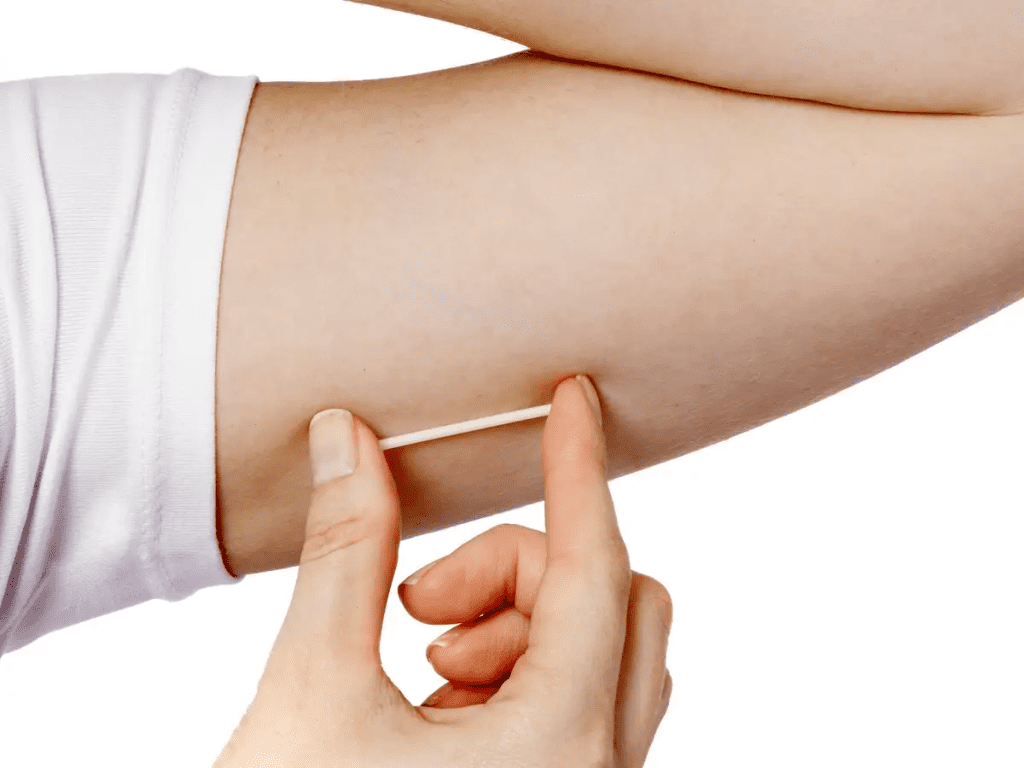Have you ever looked at a flight path on a map and wondered why airplanes take curved routes instead of flying in a straight line? Wouldn’t flying in a direct line be more fuel-efficient and faster? At first glance, it seems logical that a shorter distance would result in less fuel consumption, but in reality, aviation is far more complex.
Several factors determine flight paths, including the Earth’s shape, jet streams, weather conditions, and air traffic regulations. Let’s break down why airplanes rarely fly in a straight line and how their curved paths actually make flights more efficient.
The Earth’s Shape and the Great Circle Route

One of the biggest reasons airplanes don’t fly in a straight line is the Earth’s curvature. While we often view flight maps as flat, the Earth is a sphere, and the shortest path between two points is actually an arc called the Great Circle Route.
If you take a globe and use a string to connect two distant locations, you’ll notice that the shortest route often curves rather than follows a straight path. This is why flights from New York to Tokyo pass over the Arctic region rather than flying directly west across the Pacific Ocean.
Using the Great Circle Route helps planes save both time and fuel, even though it appears curved on a flat map.
Jet Streams and Weather Conditions Impact Flight Paths
Another key factor affecting airplane routes is jet streams—high-altitude wind currents that move at speeds of up to 200 mph (320 km/h). Pilots strategically plan routes to take advantage of these strong winds when possible.
Video : Why Airplanes Don’t Fly Straight
Flying with jet streams allows an airplane to get an extra push, helping it move faster while burning less fuel. Flying against a jet stream can slow down the plane significantly, increasing fuel consumption. Pilots often adjust routes to avoid strong headwinds, even if it means flying a longer distance.
Additionally, storms, turbulence, and severe weather conditions also play a role in determining flight paths. Airplanes may adjust mid-flight to bypass dangerous weather zones, thunderstorms, or areas with extreme turbulence.
Air Traffic Control and Flight Regulations
Air traffic isn’t a free-for-all where planes can just fly wherever they want. There are strict regulations set by aviation authorities and air traffic control (ATC) that dictate flight routes.
Some of these rules include restricted airspace, where certain areas, such as military zones, national security locations, and political zones, prohibit commercial flights from entering. Predefined flight corridors exist to avoid mid-air collisions, ensuring flights follow established air traffic lanes. Major airports handle hundreds of flights daily, so ATC ensures safe and efficient arrivals and departures.
Due to these regulations, airplanes cannot always take the most direct path and must follow designated routes instead.
Avoiding Air Turbulence for Passenger Comfort
Turbulence can make a flight uncomfortable, and pilots actively adjust routes to minimize rough air conditions. There are different types of turbulence, including thermal turbulence caused by warm air rising from the ground. Flying at higher altitudes helps avoid this.

Mechanical turbulence happens near mountains and rough terrains where wind patterns shift unpredictably. Clear-Air Turbulence (CAT) is sudden, strong air currents in high altitudes that are difficult to predict.
To ensure a smoother ride for passengers, pilots may deviate from the shortest path to avoid these turbulent areas.
Why Do Airplanes Sometimes Ascend Before Landing?
If you’ve ever been on a flight where the plane suddenly climbs just before landing, you might have felt a bit concerned. This maneuver is known as a go-around and is actually a common and safe aviation practice.
Some reasons why pilots perform a go-around include runway clearance issues. If another plane hasn’t cleared the runway in time, pilots must abort the landing and circle back. Poor weather conditions, such as poor visibility, strong crosswinds, or sudden gusts, can make a landing unsafe. If a plane is too fast, too high, or not properly aligned with the runway, the pilot will ascend and try again for a safer landing.
Go-arounds are standard procedures in aviation and ensure passenger safety above all else.
The World’s Longest Non-Stop Flight
While most flights follow curved paths, some routes push the limits of non-stop travel. The longest direct commercial flight in the world is from Singapore to Newark, New Jersey, USA.
This flight covers a distance of 10,400 miles (16,700 km) and takes approximately 18 hours and 45 minutes. It follows a carefully optimized path to balance fuel efficiency, wind conditions, and passenger comfort.
Video : Does Earth’s Rotation affect the Airplanes Speed & Flight Time
What Happens If a Plane Suddenly Loses Cabin Pressure?
A sudden drop in cabin pressure is often portrayed as a dramatic event in movies, but in reality, pilots are well-trained to handle it calmly.
When this happens, oxygen masks automatically deploy, and passengers should put them on immediately and breathe normally. The plane will descend to a safe altitude where oxygen levels are sufficient for breathing. The flight crew will assess the situation and communicate with passengers.
Losing cabin pressure doesn’t mean the plane will crash—pilots follow strict safety protocols to handle such incidents efficiently.
Final Thoughts: Why Curved Flight Paths Are More Efficient
While it may seem counterintuitive, airplanes take curved routes instead of straight lines to optimize flight efficiency, fuel usage, and passenger safety. Factors such as the Earth’s shape, jet streams, air traffic control, and weather conditions all play a crucial role in determining flight paths.
So next time you’re on a plane and see the route map displaying a curved flight path, remember there’s a lot of science and planning behind it to ensure you reach your destination as safely and efficiently as possible.
Only those with experience would know what this is.
When it comes to contraception, many people are familiar with pills, IUDs, and condoms. But there’s one method that often goes unnoticed unless you’ve personally used it or know someone who has—the birth control stick. If you’ve ever seen one and wondered what it is, you’re not alone. Let’s dive deep into this discreet yet highly effective form of birth control.
What Is the Birth Control Stick?

The birth control stick, also known as the contraceptive implant, is a small, flexible rod inserted under the skin of a woman’s upper arm. This tiny device releases hormones to prevent pregnancy for several years, making it one of the most convenient long-term birth control options available.
Unlike birth control pills that require daily intake or patches that need to be changed weekly, the implant offers a hassle-free solution. It’s a “set it and forget it” kind of birth control—ideal for those who don’t want to worry about contraception on a daily basis.
How Does It Work?
The implant slowly releases a hormone called progestin into the bloodstream. This hormone primarily works in three ways to prevent pregnancy:
- Stopping Ovulation – If an egg isn’t released from the ovaries, sperm has nothing to fertilize.
- Thickening Cervical Mucus – This makes it difficult for sperm to swim through the cervix and reach an egg.
- Thinning the Uterine Lining – Even if an egg were to be fertilized, a thinner uterine lining makes implantation highly unlikely.
Because it operates on multiple levels, the birth control stick is one of the most effective contraceptive methods available, with a success rate of over 99%.
The Process of Getting It Inserted
Many people feel uneasy about the idea of having something placed under their skin, but the insertion process is quick and relatively painless. Here’s what to expect:
- A healthcare provider numbs a small area on your upper arm.
- A tiny incision is made, and the flexible rod is inserted just under the skin.
- The entire process takes just a few minutes and requires no stitches—just a small bandage.
Most people experience little to no discomfort after the procedure, and the implant starts working almost immediately if inserted at the right time in the menstrual cycle.
Who Should Consider the Birth Control Stick?
This form of birth control is ideal for those who:
- Want long-term protection against pregnancy without daily maintenance
- Cannot use estrogen-based contraception (like some birth control pills)
- Prefer a highly effective, reversible option
- Have busy lifestyles and don’t want to worry about forgetting to take a pill
However, it’s not for everyone. Some women may experience side effects, such as irregular bleeding, headaches, or changes in mood. It’s important to discuss with a healthcare provider whether this method is right for you.
Common Misconceptions About the Birth Control Stick
Because the implant isn’t as well-known as other birth control methods, several myths surround its use. Let’s debunk some of the most common ones:

- “It’s painful to get inserted.”
The insertion process is quick, and most people only feel a slight pinch when the numbing agent is applied. - “It can travel through your body.”
The implant stays in place under the skin. It does not move around your body or get lost. - “It makes you infertile.”
Fertility typically returns quickly after the implant is removed. Many women are able to conceive within a few months. - “It’s visible under the skin.”
While you may feel the implant if you press on the area, it is not visibly noticeable.
How Long Does It Last?
One of the biggest benefits of the birth control stick is its longevity. Depending on the brand, it can last anywhere from three to five years before needing replacement. If at any point you decide you want to conceive, it can be removed, and fertility usually returns within weeks or months.
The Removal Process

Just like insertion, removal is a straightforward procedure. A small incision is made in the same area, and the implant is gently taken out. Some women may experience a bit of bruising or tenderness, but recovery is usually quick.
Final Thoughts: Is the Birth Control Stick Right for You?
The birth control stick is a game-changer for many women who want a low-maintenance, highly effective contraceptive. If you’re tired of remembering to take a pill every day or dealing with other short-term birth control methods, this might be the perfect option.
Of course, every person’s body reacts differently to hormonal contraception, so it’s always best to consult a healthcare provider before making a decision. But if you’re looking for convenience, effectiveness, and long-term peace of mind, the birth control stick might just be the best-kept secret in contraception.



Leave a Reply